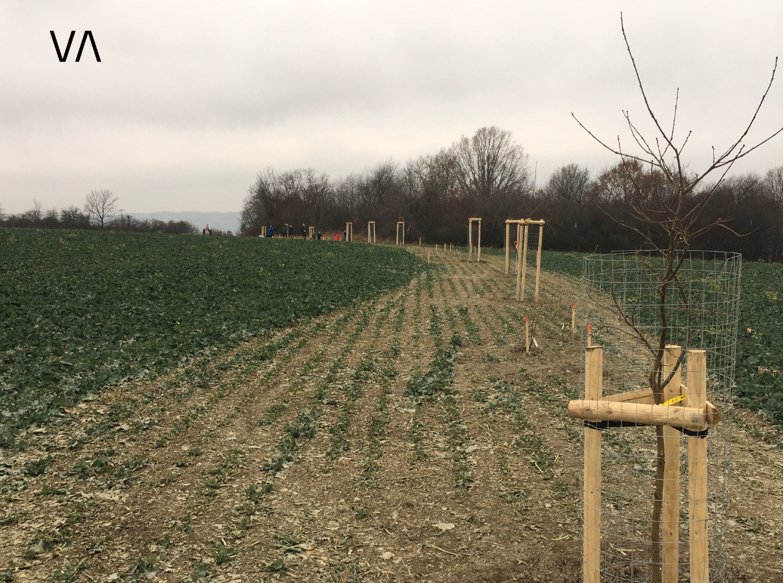Blog
Starting July, it is permissible to plant tree avenues half a meter from adjacent fields

A new legal regulation will allow planting trees along roads that are at a distance of 0.5 meters from the boundaries of adjacent plots.
This amendment to the Road Act will have a positive impact on efforts to plant trees, tree avenues, and rows of trees along roads and paths. The amendment introduces an entirely new paragraph 3 to §15 of the Road Act, which includes exceptions to the general rules for tree distances from plot boundaries.
For planting trees along roads and paths, the general rule contained in §1017 of the Civil Code previously mandated that trees typically exceeding 3 meters in height could be planted at a distance of 3 meters from plot boundaries, and other trees at a distance of 1.5 meters, unless local customs dictated otherwise.
The rule contained in §15, paragraph 1 of the Road Act still applies, stating that roadside vegetation must not endanger the safe use of the road or unreasonably impede access, maintenance, or management of adjacent plots.
Starting this July, an additional paragraph 3 will be added to this provision- On road plots, the permissible distance of a tree from the shared boundary with adjacent plots according to the Civil Code will be reduced to the extent necessary to meet the requirements of paragraph 1, but not less than 0.5 meters. On plots that are adjacent to publicly accessible purpose-built roads, this distance will be reduced to the extent necessary to ensure the safety of use of this road, but not less than 0.5 meters.
Trees that will be planted on strips of land alongside roads can now be planted at a distance of half a meter from adjacent fields or other plots. Rules will be more relaxed for plots adjacent to publicly accessible purpose-built roads compared to planting along roads. Trees along roads can be planted at a distance of 0.5 meters from plot boundaries, with the only limiting factor being the safety of road use. In the case of planting along roads, trees must also not unreasonably impede access, maintenance, or management of adjacent plots. Roadside auxiliary land means a strip of land adjacent on both sides to the body of the road owned by the owner of that road.
The existing legal framework concerning tree planting along roads and paths has often been considered too rigid. This has led to practical problems where planting new trees was challenging and, in some cases, practically impossible.
The amendment emphasizes strengthening the protection of ecological functions in agricultural landscapes and introduces a comprehensive legislative framework for soil protection, now including the protection of landscape elements such as standalone trees, tree avenues, and rows of trees. This is a step towards better integration of greenery into road infrastructure. These changes will enable a more flexible approach to tree planting along roads and paths, which is crucial for preserving the landscape's character and ecological stability. In practice, this means that tree planting will be feasible along many roadways where it was previously not possible.
More articles:

Change in Obligations When Employing Foreign Nationals
From 1 October 2025, the amendment to the Employment Act, adopted in connection with the new so-called “super benefit,” comes into effect. This has also led to stricter rules for reporting the commencement of employment of foreign nati... → continue
Dietmar Repka
Dietmar Repka
"We express our recommendations for the law firm Holubova Advokati.
Holubova Advokati was able to resolve a project for us with confidence, composure, and perseverance that German experts had deemed hopeless.
About 80 years ago, my grandparents and my father had to leave their home. The property has now been returned to our family through the inheritance that was initiated, and thanks to the excellent work of the law firm.
During the two-and-a-half-year negotiations, there were no language problems; everyone was always well informed about the current status.
Keep up the good work, everyone."
Jan Divíšek
Jan Divíšek
"I want to thank everyone at Holubová advokáti s.r.o. for their legal services in handling my protection of personality rights lawsuit."
Denis Krytinář, M.A.
Denis Krytinář, M.A.
"What I appreciate most about working with Holubová Advokáti is their high level of expertise, clear guidance throughout the entire process, and their human approach. My case was complex and emotionally demanding, but Mrs. Dvořáková and Mr. Formánek treated me with the utmost care and sensitivity. Thanks to their precise work, we achieved a successful outcome, and I can therefore recommend this firm with complete confidence to anyone seeking legal representation of the highest standard."




